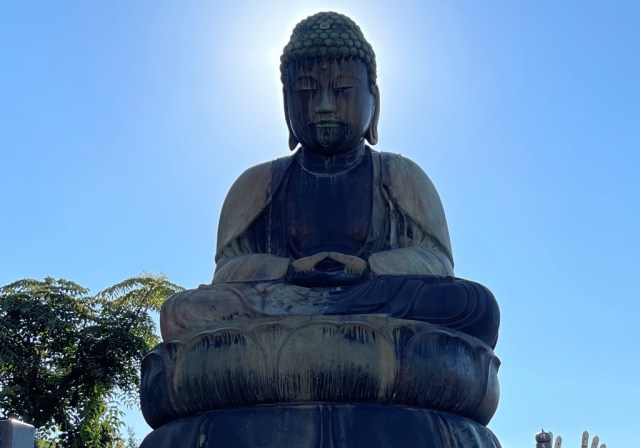
We’re not quite sure what to expect when we head out on a day trip from Tokyo to see the Great Buddha of Kamagaya.
Even if you don’t have a background in classical Japanese art, just about everyone can recognize the Great Buddha of Kamakura. Located in Kanagawa Prefecture, Tokyo’s neighbor to the south, the Great Buddha of Kamakura is 13.35 meters (43.8 feet) tall and one of the most famous symbols of Japan.
▼ Great Buddha of Kamakura
However, it’s not the only Great Buddha statue, or Daibutsu, to use the Japanese term, in Japan. For example, there’s a Great Buddha of Nara which attracts visitors to Todaiji Temple in Nara City. What a lot of people aren’t aware of, though, is that there’s also a Great Buddha in the town of Kamagaya, Chiba Prefecture, about an hour east of Tokyo.
But if it’s so close to the most populous city in Japan, why don’t more people know about the Great Buddha of Kamagaya? Probably because its claim to fame is a modest-sized one: the Kamagaya Daibutsu is the smallest Great Buddha in Japan.
Curious as to what this major/minor work of art looks like, we hopped on the train and took the Shin Keisei Line out to Kamagaya. The closest station to the statue is even called Kamagaya Daibutsu Station, and since the Great Buddha is said to be just a 30-second walk away, we figured we’d have no problem spotting it as soon as we stepped out of the ticket gate.
▼ Kamagaya-Daibutsu Station
Okay, Kamagaya Daibutsu, let’s take a look at you!
Umm…
Huh…
Looking around, we spotted a lot of the elements of a typical Japanese suburban cityscape, but no Great Buddha. We did at least see a sign designating this stretch of the road as the Kamagaya Daibutsu Bus Stop, though, and combined with the Kamagaya Daibutsu Station, there was no question that the statue should be nearby.
We looked around once more in confusion, and this time we noticed a cemetery across the street…and just barely peeking out from a sign, we say a shape that looked like the curly hair Buddha often has in statues.
…and it turned out this is where the Great Buddha of Kamagaya had been hiding!
OK, maybe “hiding” isn’t the right word. After all, the Kamagaya Daibutsu is sitting as out in the open as it can.
It’s just that even with the town’s modest level of development, the Great Buddha of Kamagaya is still dwarfed and concealed by the buildings and infrastructure around it. Granted, if you simply think of it as a statue, it’s not a tiny one. Including the pedestal, the Kamagaya Daibutsu is 2.4 meters (7.9 feet) tall. However, the Great Buddha itself is just 180 centimeters (70.9 inches) tall, only slightly more than average male height in Japan.
That’s not to say the statue is without its own special beauty, and having been commissioned by a local merchant in 1776, it’s got historical significance too. While it can’t match the awe-inspiring grandeur of its more famous Daibutsu brethren in Kamakura, Nara, and temples elsewhere in Japan, the statue has a kind, calm expression and a reassuring presence, in part because it’s simply not big enough to feel intimidating.
And undersized or not, the people of Kamagaya show big love for their Daibutsu, so we decided to get in the spirit and pick up a Daibutsu Croquette from a local vendor.
▼ The croquette, unsurprisingly, isn’t especially big.
The irony here is that there are plenty of Buddhist statues in Japan that are significantly larger than the Great Buddha of Kamagaya that don’t call themselves a Daibutsu. For that matter, there’s no official criteria on what does or doesn’t qualify a statue of Buddha for “Great” status. But maybe the lesson here is that any of us can be great in our own way as long as we choose to be.
Kamakura Daibutsu photo: Wikipedia/MGA73bot2
All other photos ©SoraNews24
● Want to hear about SoraNews24’s latest articles as soon as they’re published? Follow us on Facebook and Twitter!
[ Read in Japanese ]

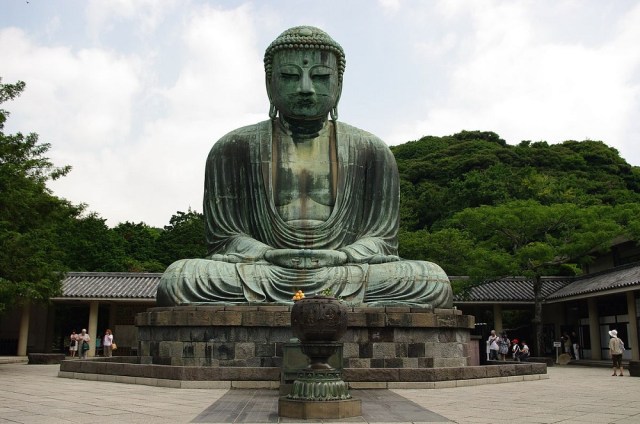
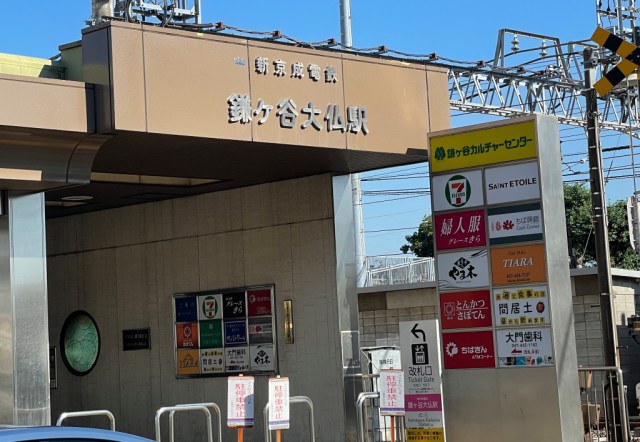
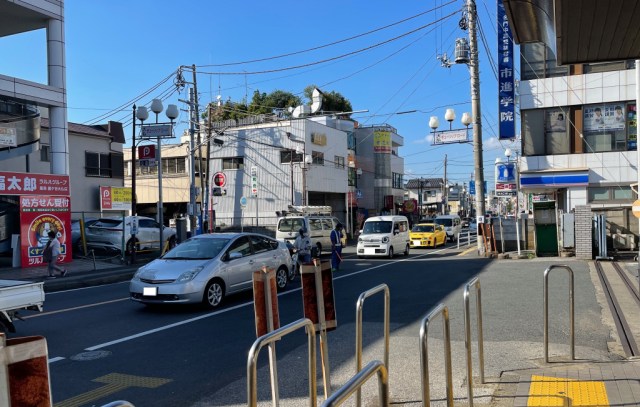
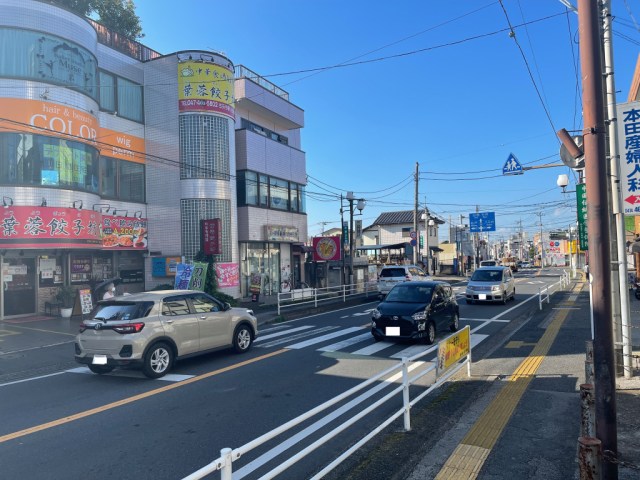
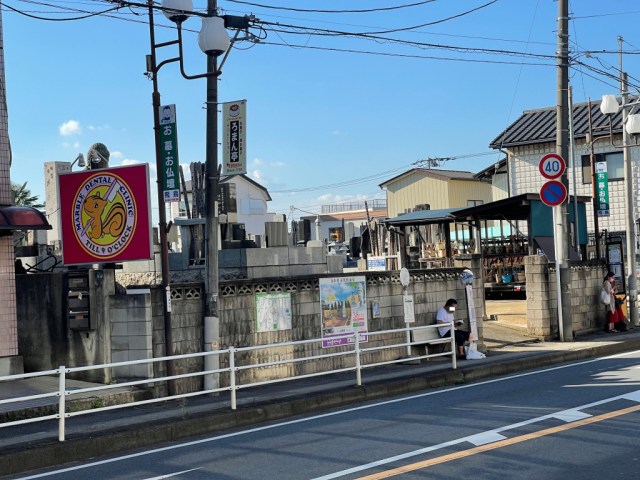
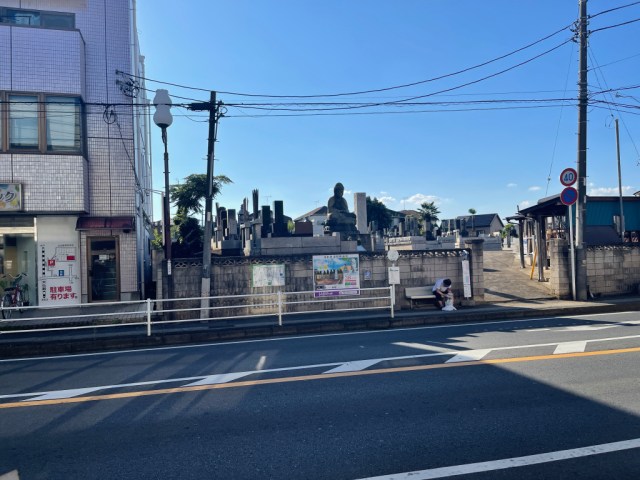
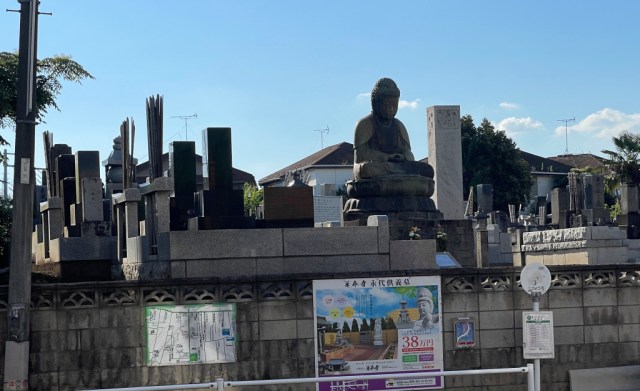

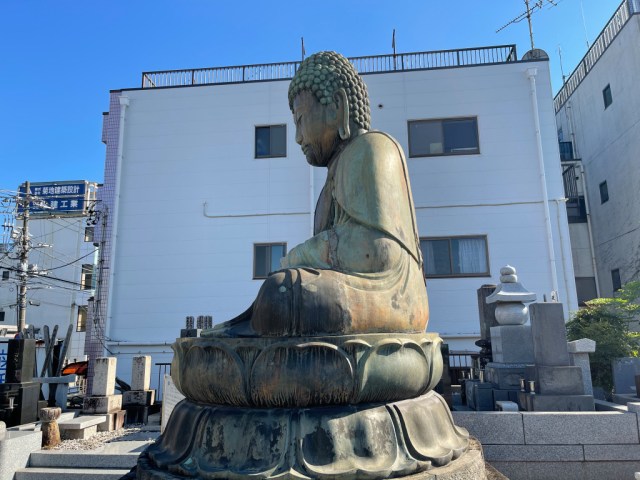
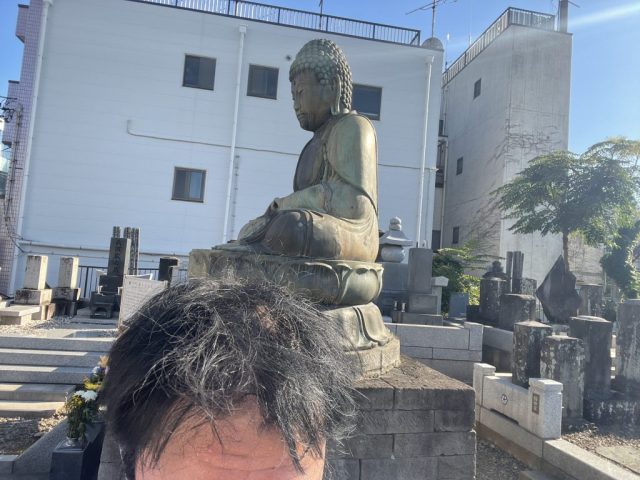

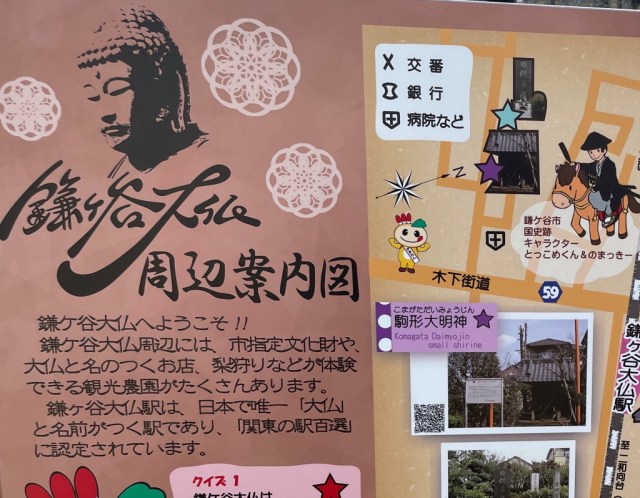
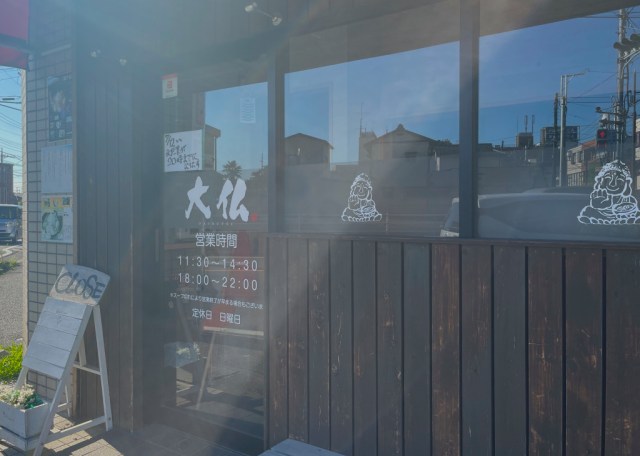
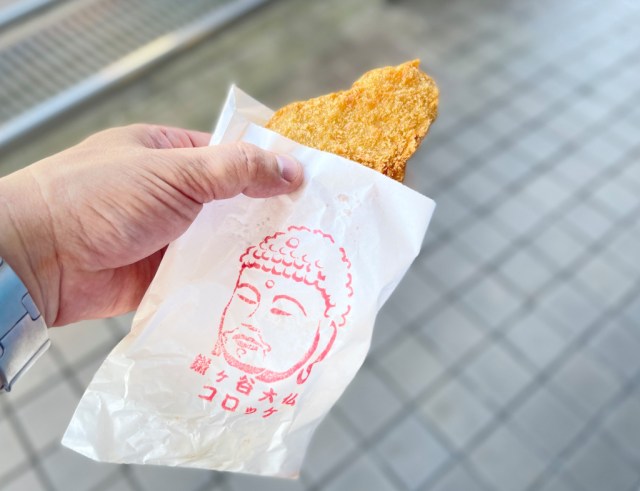
 Buddha vs Eva, Ultraman, Gundam and Lady Liberty: How the otherworldly measure up
Buddha vs Eva, Ultraman, Gundam and Lady Liberty: How the otherworldly measure up This little-known temple in rural Japan has a giant Buddha bigger than Kamakura’s or Nara’s【Pics】
This little-known temple in rural Japan has a giant Buddha bigger than Kamakura’s or Nara’s【Pics】 Afro Buddha, usually only displayed one day a year, gets rare extended viewing until mid-October
Afro Buddha, usually only displayed one day a year, gets rare extended viewing until mid-October We visit the Giant Buddha statue that our reporter dubs “kawaii” and “like a mascot character”
We visit the Giant Buddha statue that our reporter dubs “kawaii” and “like a mascot character” Anybody want to live rent-free in a house in a Japanese beach town for two years?
Anybody want to live rent-free in a house in a Japanese beach town for two years? McDonald’s new Happy Meals offer up cute and practical Sanrio lifestyle goods
McDonald’s new Happy Meals offer up cute and practical Sanrio lifestyle goods All-you-can-drink Starbucks and amazing views part of Tokyo’s new 170 meter-high sky lounge
All-you-can-drink Starbucks and amazing views part of Tokyo’s new 170 meter-high sky lounge More foreign tourists than ever before in history visited Japan last month
More foreign tourists than ever before in history visited Japan last month Starbucks reopens at Shibuya Scramble Crossing with new look and design concept
Starbucks reopens at Shibuya Scramble Crossing with new look and design concept Beautiful Sailor Moon manhole cover coasters being given out for free by Tokyo tourist center
Beautiful Sailor Moon manhole cover coasters being given out for free by Tokyo tourist center Arrest proves a common Japanese saying about apologies and police
Arrest proves a common Japanese saying about apologies and police The oldest tunnel in Japan is believed to be haunted, and strange things happen when we go there
The oldest tunnel in Japan is believed to be haunted, and strange things happen when we go there Our reporter takes her 71-year-old mother to a visual kei concert for the first time
Our reporter takes her 71-year-old mother to a visual kei concert for the first time Studio Ghibli glasses cases let anime characters keep an eye on your spectacles
Studio Ghibli glasses cases let anime characters keep an eye on your spectacles Awesome website allows you to make your own Dragon Ball character, battle other fighters
Awesome website allows you to make your own Dragon Ball character, battle other fighters Disney princesses get official manga makeovers for Manga Princess Cafe opening in Tokyo
Disney princesses get official manga makeovers for Manga Princess Cafe opening in Tokyo We try out “Chan Ramen”, an underground type of ramen popular in the ramen community
We try out “Chan Ramen”, an underground type of ramen popular in the ramen community Beautiful new Final Fantasy T-shirt collection on the way from Uniqlo【Photos】
Beautiful new Final Fantasy T-shirt collection on the way from Uniqlo【Photos】 Foreign English teachers in Japan pick their favorite Japanese-language phrases【Survey】
Foreign English teachers in Japan pick their favorite Japanese-language phrases【Survey】 Is the new Shinkansen Train Desk ticket worth it?
Is the new Shinkansen Train Desk ticket worth it? There’s a park inside Japan where you can also see Japan inside the park
There’s a park inside Japan where you can also see Japan inside the park Japanese convenience store packs a whole bento into an onigiri rice ball
Japanese convenience store packs a whole bento into an onigiri rice ball Studio Ghibli releases Kiki’s Delivery Service chocolate cake pouches in Japan
Studio Ghibli releases Kiki’s Delivery Service chocolate cake pouches in Japan Japan’s bone-breaking and record-breaking roller coaster is permanently shutting down
Japan’s bone-breaking and record-breaking roller coaster is permanently shutting down New definition of “Japanese whiskey” goes into effect to prevent fakes from fooling overseas buyers
New definition of “Japanese whiskey” goes into effect to prevent fakes from fooling overseas buyers Foreign passenger shoves conductor on one of the last full runs for Japan’s Thunderbird train
Foreign passenger shoves conductor on one of the last full runs for Japan’s Thunderbird train Our Japanese reporter visits Costco in the U.S., finds super American and very Japanese things
Our Japanese reporter visits Costco in the U.S., finds super American and very Japanese things Kyoto bans tourists from geisha alleys in Gion, with fines for those who don’t follow rules
Kyoto bans tourists from geisha alleys in Gion, with fines for those who don’t follow rules Studio Ghibli unveils Mother’s Day gift set that captures the love in My Neighbour Totoro
Studio Ghibli unveils Mother’s Day gift set that captures the love in My Neighbour Totoro Domino’s Japan now sells…pizza ears?
Domino’s Japan now sells…pizza ears? New Japanese KitKat flavour stars Sanrio characters, including Hello Kitty
New Japanese KitKat flavour stars Sanrio characters, including Hello Kitty Sales of Japan’s most convenient train ticket/shopping payment cards suspended indefinitely
Sales of Japan’s most convenient train ticket/shopping payment cards suspended indefinitely Sold-out Studio Ghibli desktop humidifiers are back so Totoro can help you through the dry season
Sold-out Studio Ghibli desktop humidifiers are back so Totoro can help you through the dry season Japanese government to make first change to romanization spelling rules since the 1950s
Japanese government to make first change to romanization spelling rules since the 1950s Ghibli founders Toshio Suzuki and Hayao Miyazaki contribute to Japanese whisky Totoro label design
Ghibli founders Toshio Suzuki and Hayao Miyazaki contribute to Japanese whisky Totoro label design Doraemon found buried at sea as scene from 1993 anime becomes real life【Photos】
Doraemon found buried at sea as scene from 1993 anime becomes real life【Photos】 Tokyo’s most famous Starbucks is closed
Tokyo’s most famous Starbucks is closed One Piece characters’ nationalities revealed, but fans have mixed opinions
One Piece characters’ nationalities revealed, but fans have mixed opinions We asked a Uniqlo employee what four things we should buy and their suggestions didn’t disappoint
We asked a Uniqlo employee what four things we should buy and their suggestions didn’t disappoint Princesses, fruits, and blacksmiths: Study reveals the 30 most unusual family names in Japan
Princesses, fruits, and blacksmiths: Study reveals the 30 most unusual family names in Japan Studio Ghibli’s new desktop Howl’s Moving Castle will take your stationery on an adventure
Studio Ghibli’s new desktop Howl’s Moving Castle will take your stationery on an adventure Nara’s deer continue their summertime tradition of commandeering one of the city’s streets
Nara’s deer continue their summertime tradition of commandeering one of the city’s streets Kyoto tourist crowds disappearing due to coronavirus outbreak, creating travel crisis/opportunity
Kyoto tourist crowds disappearing due to coronavirus outbreak, creating travel crisis/opportunity Enormous Buddhist Kannon statue in Sendai shocks visitors with otherworldly looming
Enormous Buddhist Kannon statue in Sendai shocks visitors with otherworldly looming Does a denim kimono look or feel good? Our kimono neophyte reporter finds out【Photos】
Does a denim kimono look or feel good? Our kimono neophyte reporter finds out【Photos】 Foreigner visiting Japan? Don’t forget to get your free-to-use smartphone from Kanagawa
Foreigner visiting Japan? Don’t forget to get your free-to-use smartphone from Kanagawa Japanese designers create a knit hat to help you look like Buddha
Japanese designers create a knit hat to help you look like Buddha New Attack on Titan souvenir straps feature Colossal Titan at famous Japanese landmarks
New Attack on Titan souvenir straps feature Colossal Titan at famous Japanese landmarks Five of the worst areas to live in and around Tokyo
Five of the worst areas to live in and around Tokyo Miss school field trips? Now adults can go on a “school trip” too with new plan at Nara hotel
Miss school field trips? Now adults can go on a “school trip” too with new plan at Nara hotel Beautiful forest in southern Japan will spirit you away to another world
Beautiful forest in southern Japan will spirit you away to another world Let’s try some “deer poop” ice cream in Nara, Japan’s city of deer!
Let’s try some “deer poop” ice cream in Nara, Japan’s city of deer! Massive “earthquake clouds” appear over west Japan, entrance/freak people out【Photos】
Massive “earthquake clouds” appear over west Japan, entrance/freak people out【Photos】 Dress like an aristocrat from the Nara period at new costume rental shop in Nara【Photos】
Dress like an aristocrat from the Nara period at new costume rental shop in Nara【Photos】 Nara, Japanese city famous for its streets of tame deer, begins culling program within city
Nara, Japanese city famous for its streets of tame deer, begins culling program within city
Leave a Reply